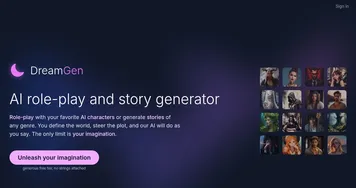PlantNet
PlantNet, or Pl@ntNet, is a citizen science platform using AI to identify plants from user-submitted photos, contributing to a global biodiversity database. Launched in 2009 by French research institutes like CIRAD, INRIA, and Tela Botanica, it supports over 27,000 species and has been downloaded over 20 million times across 180 countries. Available on iOS, Android, and the web – it’s free and supports 44 languages.
The core functionality is image-based plant identification. Users photograph a plant part — leaf, flower, fruit, or bark — and the AI, powered by machine learning and deep learning, matches it against a database of over a billion images. Results include a confidence score and similar species for comparison. The 2025 update added offline identification and an enhanced genus/family explorer. Users can select regional floras, like Tropical Andes or World Flora, for more accurate results. The app retrains its AI monthly using community-validated observations.
Pl@ntNet’s community features allow users to share, review, and re-identify observations, with experienced users’ votes carrying more weight. Integration with the Global Biodiversity Information Facility (GBIF) ensures data contributes to scientific research. The app also offers mapping of observations and links to species factsheets. A 2018 study used Pl@ntNet data for ecological research, and in 2020, it won an Inria innovation award.
Compared to PictureThis, which offers premium features like detailed guides, or iNaturalist, which includes animals, Pl@ntNet is fully free but less polished. It struggles with blurry or low-information images, and some users report misidentifications for rare species. The web version is less intuitive than the mobile app.
The app’s strengths include its accessibility, scientific credibility, and offline mode. Weaknesses include occasional inaccuracies and a basic interface. For best results, use clear photos, select the appropriate plant part, and enable location sharing to contribute to biodiversity mapping.
Video Overview ▶️
What are the key features? ⭐
- Image Recognition: Identifies plants from photos using AI trained on over a billion images.
- Multi-Flora Search: Searches across all floras for plants when region is unknown.
- Offline Mode: Allows plant identification without internet using the 2025 model.
- Community Validation: Users review and confirm observations to improve AI accuracy.
- GBIF Integration: Contributes user data to a global biodiversity database.
Who is it for? 🤔
Examples of what you can use it for 💭
- Hiker: Identifies wild plants on trails to learn about local flora.
- Gardener: Checks if a backyard plant is native or invasive before removal.
- Teacher: Uses the app to teach students about plant species in biology class.
- Researcher: Contributes photos to map biodiversity in a specific region.
- Traveler: Identifies exotic plants while exploring new countries.
Pros & Cons ⚖️
- Free to use with no premium tiers.
- Supports 44 languages for global access.
- Offline mode for remote use.
- Contributes to scientific research.
- Less polished interface.
- Occasional misidentifications.
FAQs 💬
Related tools ↙️
-
 BaiRBIE.me
Transforms selfies into Barbie or Ken doll avatars using AI
BaiRBIE.me
Transforms selfies into Barbie or Ken doll avatars using AI
-
 ComicsMaker.ai
An AI-powered comic generator makes it easy to bring your stories to life
ComicsMaker.ai
An AI-powered comic generator makes it easy to bring your stories to life
-
 Kayyo
Personal AI MMA trainer in your pocket designed to create one billion martial artists
Kayyo
Personal AI MMA trainer in your pocket designed to create one billion martial artists
-
 DreamGen
Create and interact with AI characters in various scenarios
DreamGen
Create and interact with AI characters in various scenarios
-
 CrushOn.AI
Provides an environment for unrestricted and unfiltered interaction with AI chatbots
CrushOn.AI
Provides an environment for unrestricted and unfiltered interaction with AI chatbots
-
 OtherHalf
An AI platform to create immersive AI companions designed to form emotional bonds with users
OtherHalf
An AI platform to create immersive AI companions designed to form emotional bonds with users

